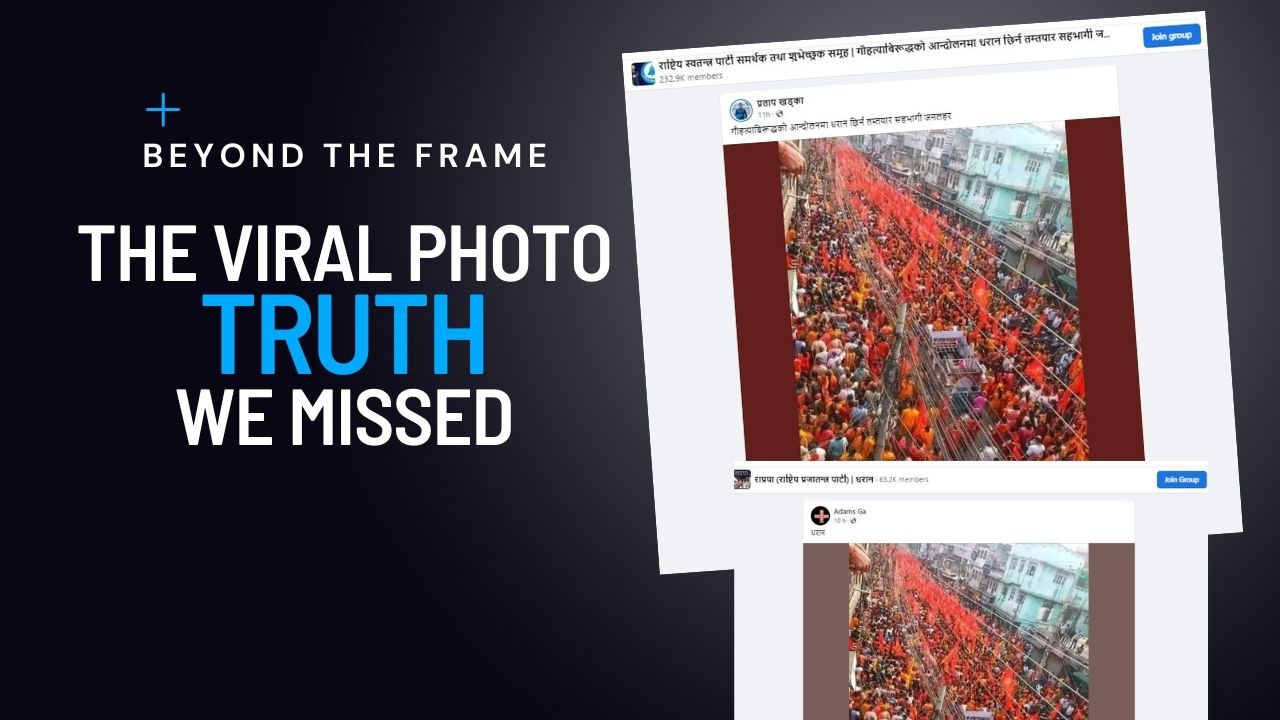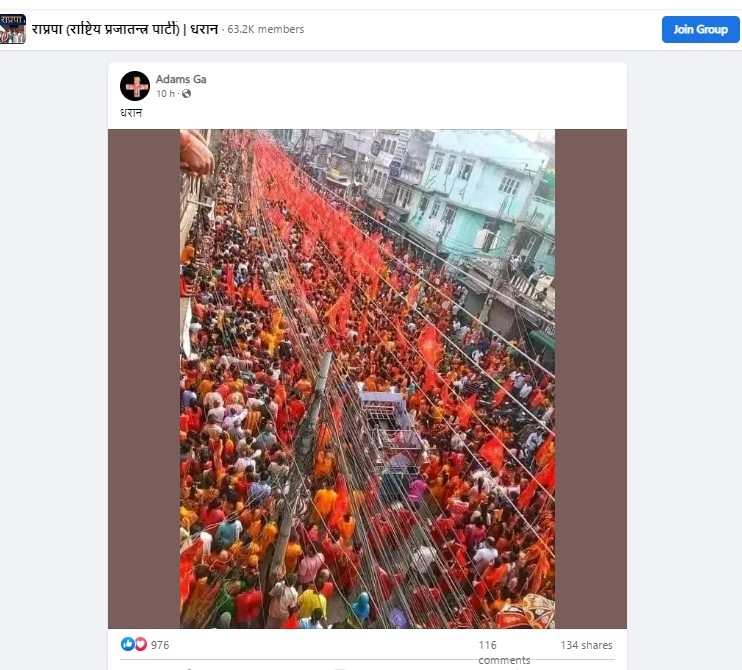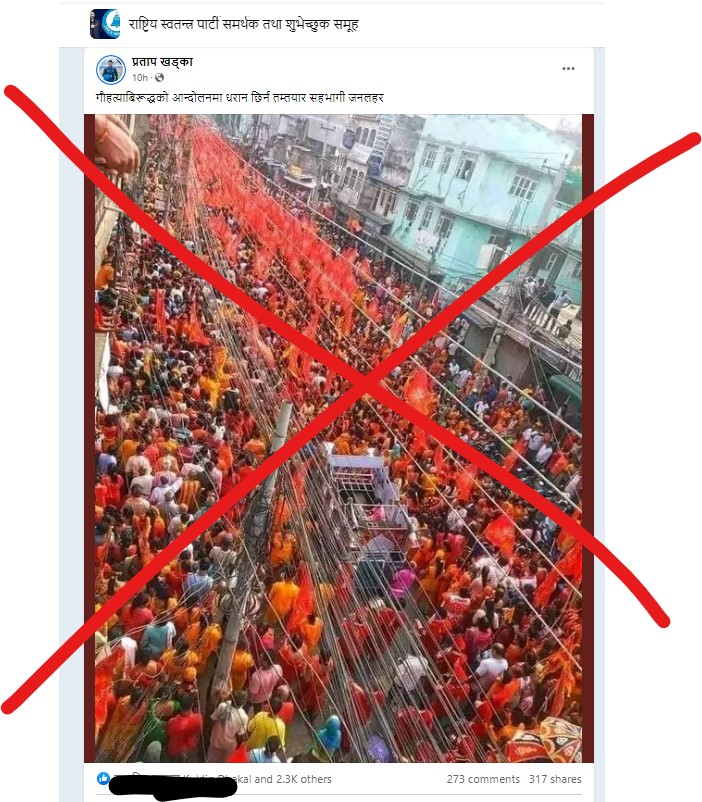
In the realm of social media, images hold the power to evoke emotions, spark debates, and unite people for a common cause. But what happens when a powerful image, brimming with significance, is misunderstood and its narrative twisted? In the age of information overload, such instances are becoming alarmingly common. The recent uproar surrounding a viral photograph is a poignant reminder of the importance of fact-checking and empathetic understanding.

The photograph in question, capturing a sea of people carrying red flags, bore a caption that ignited emotions across digital platforms. The image was believed to depict the ‘Dharan anti-cow slaughter rally’, a poignant response to the distressing news of a cow scandal in Dharan, Nepal. As news of the rally, along with the cow scandal and the subsequent 24-hour prohibitory orders, spread like wildfire, the image took on a life of its own.
But there’s more to this story than meets the eye.
Amidst the fervor, a group of vigilant fact-checkers at NepalFactCheck delved deeper. Their investigation revealed that the image had been misinterpreted. This powerful photograph was not, in fact, of the Dharan rally. Instead, it was an image from Birgunj’s Gahwamai Rath Yatra, a two-month-old event that had been thrust into an unintended spotlight. The emotional weight carried by the image remained true, but its context had been reshaped by the whirlwind of misinformation.

The backstory paints a more intricate picture. Bindra Kumar Rai and Rajan Pariyar were arrested on allegations of cow slaughter, an incident that had sparked an intense public discourse. The ensuing days saw a spectrum of voices – some condemning, others supporting – reverberate throughout the nation. A Dharan-centric rally was organized in response, an embodiment of the collective sentiment against the cow slaughter. It was a powerful display of people uniting for a cause they held dear.
On social media, a single image managed to encapsulate the fervor of the times. A photograph, taken from an elevated angle, showcased a mass of individuals carrying red flags. Captions associated with the image were emotionally charged, mirroring the sentiments of the people. One post, by Pratap Khadka, received thousands of reactions, comments, and shares, igniting a digital movement.

But as the saying goes, a picture can tell a thousand words, and sometimes even falsehoods. The image had found its way to various platforms, each time accompanied by captions that added layers to its significance. It was as if the photograph had become a rallying point itself, gathering individuals who resonated with its apparent message.
However, the truth couldn’t remain hidden for long. Fact-checkers embarked on a mission to set the record straight. Through reverse image searches and meticulous cross-referencing, they pieced together the real narrative. The image, which had been an integral part of the Gahwamai Rath Yatra in Birgunj, stood as a testament to the power of visuals to transcend time and context.
The emotional intensity of the image remained untouched, but its connection to the Dharan rally was severed. The journey of this photograph became a metaphor for the times we live in – a reminder that in the digital age, emotions can be manipulated, and context can be lost in the whirlwind of sharing and reacting.
The lesson learned from this emotional journey is twofold. First, the power of images to evoke feelings and reactions is immense, and thus, it’s our responsibility to ensure their stories are true. Second, empathy and understanding need to be the bedrock of our interactions online. The next time a photograph resonates deeply, let’s remember to pause, fact-check, and appreciate the nuanced tales they have to tell.
In the end, this misinterpreted photograph serves as a testament to the importance of truth and empathy in a world where images have the power to shape reality. Let’s carry this lesson forward as we navigate the uncharted waters of the digital age.